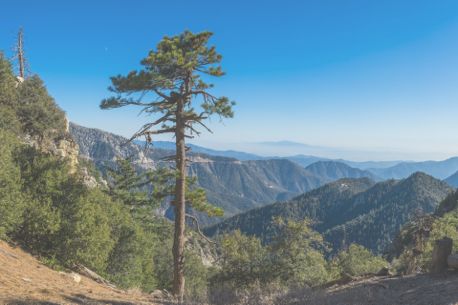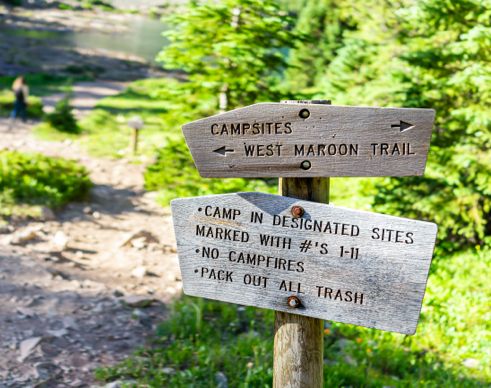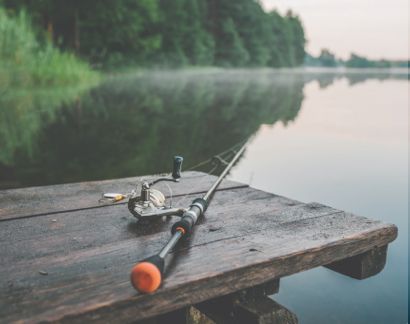Coconino National Forest, located in northern Arizona near Flagstaff, spans across million acres and features diverse landscapes, from ponderosa pine forests to alpine tundra. Popular sights include the San Francisco Peaks and the iconic red rocks of Sedona. The best time to visit is spring and fall when the weather is mild. While summer offers vibrant greenery, winter provides opportunities for skiing. Nearby accommodations range from rustic cabins to RV parks, with options for RV rentals available in RV Share. Coconino National Forest is divided into three campground camping areas– Flagstaff Ranger District, Mogollon Rim Ranger District and Red Rock Ranger District. For RV camping, the best campgrounds include the Bonito campground and Pine Grove campground, with stunning views and access to hiking trails. The area is rich in wildlife and offers numerous recreational activities such as fishing and hiking, making it an ideal spot for outdoor enthusiasts.
Camping in Coconino National Forest
If you are interested in Coconino National Forest RV camping, the forest offers a variety of camping options ranging from developed campgrounds to dispersed camping sites, several of them being RV-friendly. You can also explore campgrounds around the forest for camping near Coconino National Forest.
Campgrounds in Coconino National Forest
Check the top campgrounds in Arizona before planning your trip to the Coconino National Forest. Find the best camping places, hiking trails, and budget-friendly camping options. Additionally, you can also find RV dump stations nearby. If you are looking for alternative campgrounds near Coconino National Forest, check out these popular BLM sites in Arizona.
Campgrounds by Lakes/Rivers
Budget-friendly Campgrounds
Dispersed Camping Areas: Free with "Leave No Trace" principles

-
Pine Flat Campground
Pine Flat Campground is one of the most popular campgrounds in the Coconino National Forest. You'll understand why as soon as you pull into one of the spectacular campsites — each one is shaded by towering pine trees and blessed with views of the rocky cliffs in Oak Creek Canyon. Some sites sit right next to Oak Creek, so you can have your morning coffee to the sound of moving water. The campground's 56 sites accept RVs up to 36 feet long; 18 spots can be reserved in advance, and the remainder are first-come, first-served. There are no hookups, but you can find vault toilets and drinking water close to your site. A quick walk from camp, enjoy swimming, fishing, wildlife watching, and hiking along Oak Creek. Every site is $22 per night.
-
Woody Mountain Campground and RV Park
Stay an easy drive from everything the Coconino National Forest has to offer at Woody Mountain Campground and RV Park. RV sites here offer all of the comforts of home: full hookups, free Wi-Fi, hot showers, modern bathrooms, and a laundry room. Fill up your water and use the dump station, and grab an evening snack in the general store. There are even a restaurant and a hiking trail on-site for convenience. Rates for full-hookup sites start at $52 per night.
Coconino National Forest Hiking Trails
Explore the diverse hiking trails in Coconino National Forest, ranging from easy walks to challenging treks.
Easy Hikes for Beginners
Challenging Hiking Trails
Lakeside Trails

-
Waterfall Trail on Fossil Creek
The Waterfall Trail on Fossil Creek is one of the most popular hikes in the Coconino National Forest. It runs along Fossil Creek, which has the Wild and Scenic designation, offering a look at a different side of Arizona. As you hike, you'll see a series of spectacular waterfalls that cascade into brilliant green pools. Swimming is possible away from the waterfalls in a number of stunning, calm pools. The hike is relatively easy, but if you're bringing kids, take care around the edges of the waterfalls.
Length: 1 mile
Intensity: Moderate
-
Humphreys Trail
If you're in the mood for a challenge, head straight to Humphreys Trail. Steep and strenuous, it takes you to the summit of Humphreys Peak, the highest point in Arizona. On clear days, you can see across to the Grand Canyon, Oak Creek Canyon, and the Painted Desert. The journey is as beautiful as the destination; you'll see alpine forests, bristlecone pines, and rocky slopes.
Length: 10 miles round-trip
Intensity: Strenuous
-
Soldier Pass Trail
Soldier Pass Trail leads to one of the natural wonders of the Coconino National Forest: the Seven Sacred Pools. These natural depressions have formed in the sandstone, creating a miniature, photogenic oasis in the wilderness. During the rainy season, the pools fill with water — if you're lucky, you might even see a waterfall as the overflow cascades from pool to pool. Bring plenty of water and sunscreen as the trail is exposed and often hot.
Length: 4.5 miles round-trip
Intensity: Moderate
-
Courthouse Butte Loop Trail
Get up close and personal with the red rocks on the Courthouse Butte Loop Trail. It winds around Courthouse Butte and Bell Rock, two beautiful formations that rise high off the desert floor. Every turn reveals different views of the red rock cliffs that extend in all directions. This is a great hike to do with kids; it's a popular route, but you can avoid the crowds by setting out early in the day.
Length: 4.2 miles round-trip
Intensity: Moderate
-
Bear Mountain Trail #54
Offering some of the most breathtaking views in the Red Rock-Secret Mountain Wilderness, Bear Mountain Trail #54 is a favorite among photographers. Leave early in the morning, and bring plenty of water; most of the trail is completely exposed, so you won't find much in the way of shade. Over 2.3 miles, the trail takes you to the top of Bear Mountain, where you can see Red Canyon and the San Francisco Peak. This route can be done any time of year, but it's best when there's no snow.
Length: 4.6 miles round-trip
Intensity: Strenuous
-
West Fork of Oak Creek Trail
The West Fork of Oak Creek Trail is one of the most frequently hiked trails in the entire Coconino National Forest, and it's easy to see why. The well-maintained path takes you under towering red-rock cliffs, through green forests, and next to a stream. The West Fork makes a great hike any time of year, but it's particularly lovely in the fall when the trees in the canyon blaze with colorful leaves. Depending on the time of year and the water level, you may need to walk through the stream.
Length: 3.2 miles one way
Intensity: Moderate
-
Airport Loop Trail
If you're interested in walking through Sedona's legendary energy vortices, the Airport Loop Trail is the easiest way to do so. The trail runs around the top of Airport Mesa, which is famous as the home to an energy vortex; don't be surprised if you see hikers meditating or doing yoga on the red rocks. Even if you're not interested in the mystical properties of the region, this hike offers stunning panoramic views of Sedona, the red-rock cliffs, and the forest.
Length: 4.3 miles round-trip
Intensity: Moderate
How to get to Coconino National Forest
Address: 1824 S. Thompson St., Flagstaff, AZ 86001
Fee: Entry fee $0
By Car
From Sedona, Arizona to Flagstaff, Arizona: Drive along Highway 89A on this 16.6-mile scenic route to reach the forest’s entry points.
By Air
Grand Canyon National Park Airport (GCN): Located around 8-10 miles from Coconino, this airport offers the closest access to the forest.
Flagstaff Pulliam Airport (FLG): Located about 5 miles south of downtown Flagstaff, it is a convenient access point for visitors heading to the Coconino National Forest.
Popular Entry Points to Coconino National Forest
Coconino National Forest has multiple entry points, with popular ones including:
Oak Creek Canyon: A scenic drive and popular hiking area.
Sedona Access Points: Various trails and viewpoints are accessible from Sedona, including Cathedral Rock and Bell Rock.
Forest Road 525: This road leads to several recreational areas within the forest.
Seasonal Restrictions
During the busy season (spring through fall), some areas may have restrictions due to high traffic or environmental protection measures. It's advisable to check for:
Entry Fees for Coconino National Forest
Coconino National Forest does not charge an entry fee for access; however, specific areas such as developed campgrounds or recreation sites may have fees associated with camping or amenities.
Frequently Asked Questions About Coconino National Forest
What is the closest town to Coconino National Forest?
Flagstaff, Arizona is one of the closest towns to the Coconino National Forest. Flagstaff is a sizable city, with plenty of grocery stores, restaurants, hotels, and campgrounds. It's also an interesting place to visit in its own right, and it's worth spending a day or two in town to explore the area.
What type of wildlife lives in Coconino National Forest?
Wildlife that lives in Coconino National Forest includes horned toads, elk, coyotes, bald eagles, blue herons, bears, and mountain lions. The forest is also home to a variety of birds, fish, reptiles, and small animals.
Do you need a permit to fish or hunt in Coconino National Forest?
Yes, you need a permit to hunt in the Coconino National Forest. If you are 10 years or older, you also need a fishing permit to fish in the forest.
Is there a limit to how long you can camp in Coconino National Forest?
Yes, there is a limit to how long you can camp in Coconino National Forest. Campers may stay up to 14 days in the forest within a 30-day period.
Does Coconino National Forest offer free camping sites?
Yes, the Coconino National Forest offers free camping sites. Dispersed camping is allowed throughout the forest. Dispersed camping is free, but does not offer any amenities. Campers must pack everything in with them, and pack everything out when they leave.




